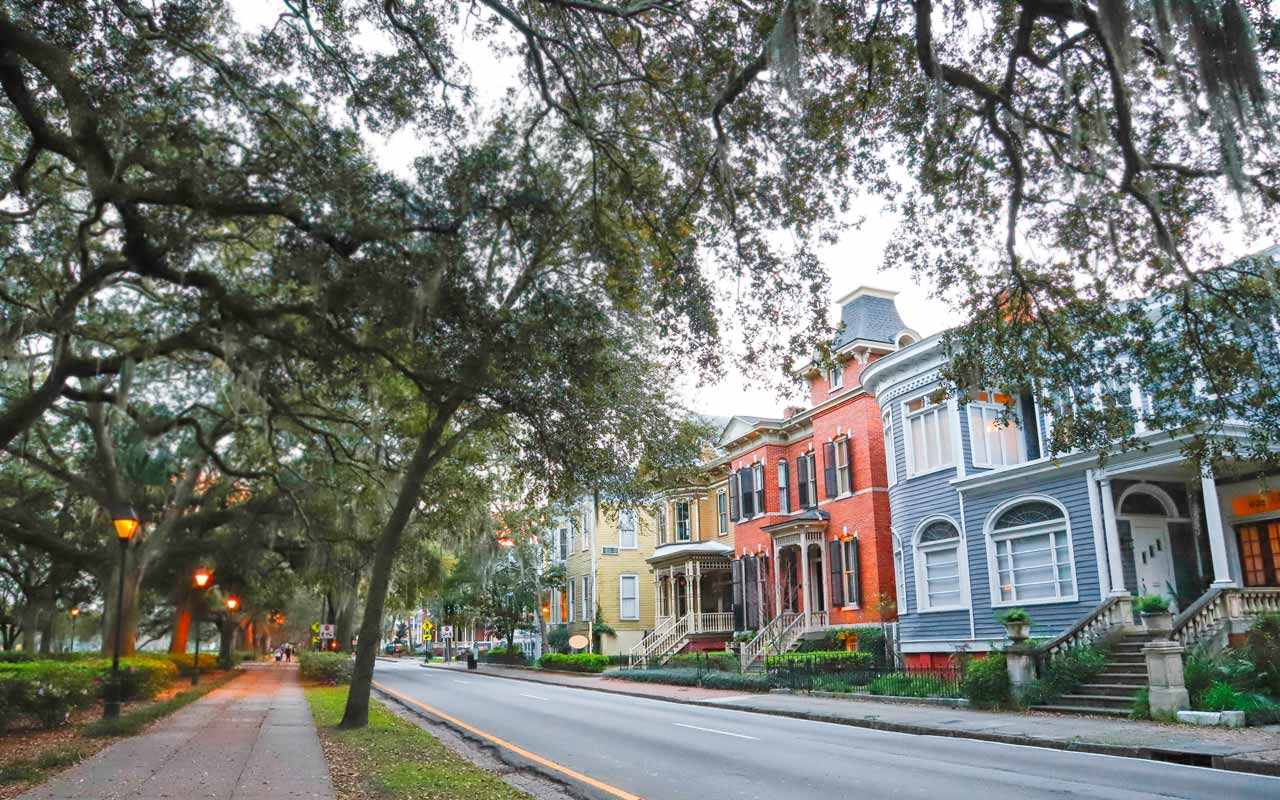Savannah, Ga.: A Smart Place to Retire
This city’s well-known historical district offers plenty of fascinating museums and local traditions.


Population: 145,862
Cost of living: 88
Median home price: $225,000
From just $107.88 $24.99 for Kiplinger Personal Finance
Become a smarter, better informed investor. Subscribe from just $107.88 $24.99, plus get up to 4 Special Issues

Sign up for Kiplinger’s Free Newsletters
Profit and prosper with the best of expert advice on investing, taxes, retirement, personal finance and more - straight to your e-mail.
Profit and prosper with the best of expert advice - straight to your e-mail.
College perk: You can buy the work of up-and-coming artists and designers at the Savannah College of Art and Design’s retail store.
Savannah isn’t your typical college town, but if you enjoy the arts—from film to fashion—this city might be for you.
Herbert and Brenda Singleton grew up in Georgia, but their careers took them to Fort Wayne, Ind. Forty-one years later, family and warm weather lured them to the Savannah area. “The area has breathtaking botanical scenery,” says Brenda, 71. “It’s close to the ocean and beaches. We love seafood, and there are so many restaurants to choose from.” Herbert, 72, enjoys the multitude of cultural events, too. “You can literally go broke if you try to take advantage of all the artistic and cultural opportunities here,” he says.
The private Savannah College of Art and Design doesn’t have a traditional campus. Rather, it operates out of historic buildings it has renovated, mostly in the downtown area. Many school-sponsored activities are open to residents. One of the most popular is the annual Savannah Film Festival. It features more than 100 films, some from Hollywood studios, that haven’t yet hit theaters.
Savannah is also home to Savannah State University and the Armstrong Campus of Georgia Southern University, public institutions that offer free tuition for residents age 62 and older. But you don’t need to sit in a classroom to learn history here, because it’s all around. Savannah, founded in 1733, was the first city in Georgia. It has one of the largest National Historic Landmark Districts, and each year the months-long Georgia History Festival culminates in February with a parade and Super Museum Sunday, when more than 100 historical sites and museums open their doors for free.
Savannah has plenty of parks where Spanish moss hangs from massive live oaks. Forsyth Park is the largest, at more than 30 acres, and it features a 161-year-old fountain that’s one of the city’s most photographed sites. The water in park fountains is dyed green for St. Patrick’s Day. (Savannah boasts of having one of nation’s largest St. Patrick’s Day Parades.)
Hot and steamy summers are a drawback. But many here escape the heat by heading 18 miles east to Tybee Island’s beach.
Home prices in the popular downtown area can run from $300,000 for a three-bedroom house to $1 million or so for a renovated house on one of the historic squares, says Tommy Danos, president of the Savannah Area Realtors. A three-bedroom house outside downtown typically sells for $220,000, he says. Rents run $1,000 to $2,500 a month for a two- or three-bedroom apartment, but Savannah has numerous short-term vacation rentals that allow people to test living in the city, he says. Many retirees flock to The Landings, a golf community on nearby Skidaway Island, where home prices range from $250,000 to more than $2 million.
Effingham Health System, which Medicare rates as a four-star hospital, is about 30 miles away in Springfield, Ga. Travelers can fly out of Savannah/Hilton Head International Airport, a dozen miles northwest of the Historic District.
Georgia is one of Kiplinger’s top 10 tax-friendly states for retirees. Social Security income is tax-exempt, and so is up to $65,000 of most types of retirement income if you’re 65 or older (up to $35,000 if you’re 62 to 64).
For population figures, we used the most recent U.S. Census Bureau data. Cost-of-living data comes from the Council for Community and Economic Research (100 represents the national median). Median home prices were provided by Redfin, Zillow and local associations of Realtors.
Profit and prosper with the best of Kiplinger's advice on investing, taxes, retirement, personal finance and much more. Delivered daily. Enter your email in the box and click Sign Me Up.

-
 Stocks Extend Losing Streak After Fed Minutes: Stock Market Today
Stocks Extend Losing Streak After Fed Minutes: Stock Market TodayThe Santa Claus Rally is officially at risk after the S&P 500's third straight loss.
-
 What Bilt Cardholders Need to Know as Wells Fargo Exits the Program
What Bilt Cardholders Need to Know as Wells Fargo Exits the ProgramA major shake-up in the Bilt Rewards program could affect your credit card, rent rewards and points strategy heading into 2026.
-
 3 Major Changes to the Charitable Deduction in 2026
3 Major Changes to the Charitable Deduction in 2026Tax Breaks About 144 million Americans might qualify for the 2026 universal charity deduction, while high earners face new IRS limits. Here's what to know.
-
 457 Plan Contribution Limits for 2026
457 Plan Contribution Limits for 2026Retirement plans There are higher 457 plan contribution limits in 2026. That's good news for state and local government employees.
-
 Medicare Basics: 12 Things You Need to Know
Medicare Basics: 12 Things You Need to KnowMedicare There's Medicare Part A, Part B, Part D, Medigap plans, Medicare Advantage plans and so on. We sort out the confusion about signing up for Medicare — and much more.
-
 The Seven Worst Assets to Leave Your Kids or Grandkids
The Seven Worst Assets to Leave Your Kids or Grandkidsinheritance Leaving these assets to your loved ones may be more trouble than it’s worth. Here's how to avoid adding to their grief after you're gone.
-
 SEP IRA Contribution Limits for 2026
SEP IRA Contribution Limits for 2026SEP IRA A good option for small business owners, SEP IRAs allow individual annual contributions of as much as $70,000 in 2025, and up to $72,000 in 2026.
-
 Roth IRA Contribution Limits for 2026
Roth IRA Contribution Limits for 2026Roth IRAs Roth IRAs allow you to save for retirement with after-tax dollars while you're working, and then withdraw those contributions and earnings tax-free when you retire. Here's a look at 2026 limits and income-based phaseouts.
-
 SIMPLE IRA Contribution Limits for 2026
SIMPLE IRA Contribution Limits for 2026simple IRA For 2026, the SIMPLE IRA contribution limit rises to $17,000, with a $4,000 catch-up for those 50 and over, totaling $21,000.
-
 457 Contribution Limits for 2024
457 Contribution Limits for 2024retirement plans State and local government workers can contribute more to their 457 plans in 2024 than in 2023.
-
 Roth 401(k) Contribution Limits for 2026
Roth 401(k) Contribution Limits for 2026retirement plans The Roth 401(k) contribution limit for 2026 has increased, and workers who are 50 and older can save even more.